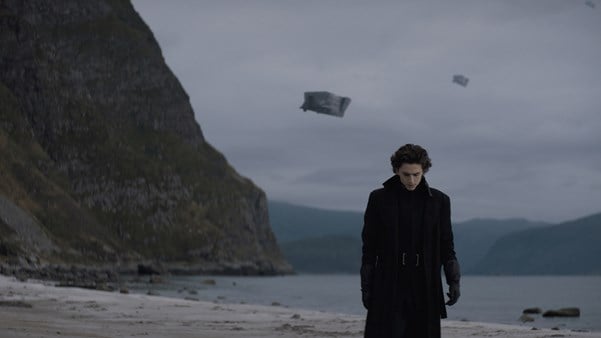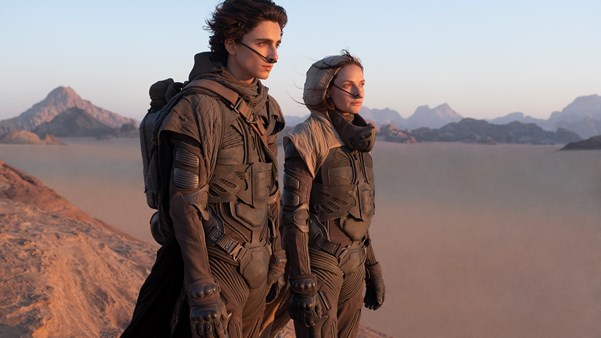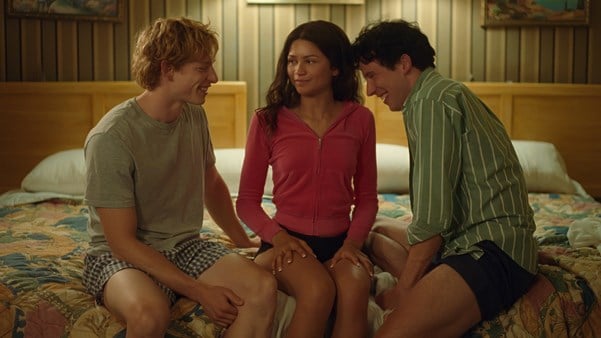The bleak sci-fi futures presaged in Furiosa, Dune: Part Two and Fallout all depict arid worlds where water is a precious rarity. Billie Walker explores this unsettling trend.

In the Western world, where sanitised water flows from every tap, it is hard for us to imagine a society without it. In fact, we have made the necessity seem so infinite that many of us are still befuddled by the knowledge that water is a limited resource. But lately, with the help of Denis Villeneuve’s adaptations of Dune (2021-), the Fallout TV series (2024-) and now George Miller’s Furiosa: A Mad Max Saga (2024), the desert landscape is at the forefront of our minds.
Science-fiction has always concerned itself with humanity’s dystopian future. Whether it’s the recognisable, built-up metropolises in Blade Runner (1982) and The Fifth Element (1997); the dreary urban ruins of Children of Men (2006); or the cities that nature has taken back, with plants swallowing entire buildings whole in The Last of Us (2023) and I Am Legend (2007). But rarely is the genre so unified in its vision of what lies ahead as it is in 2024.
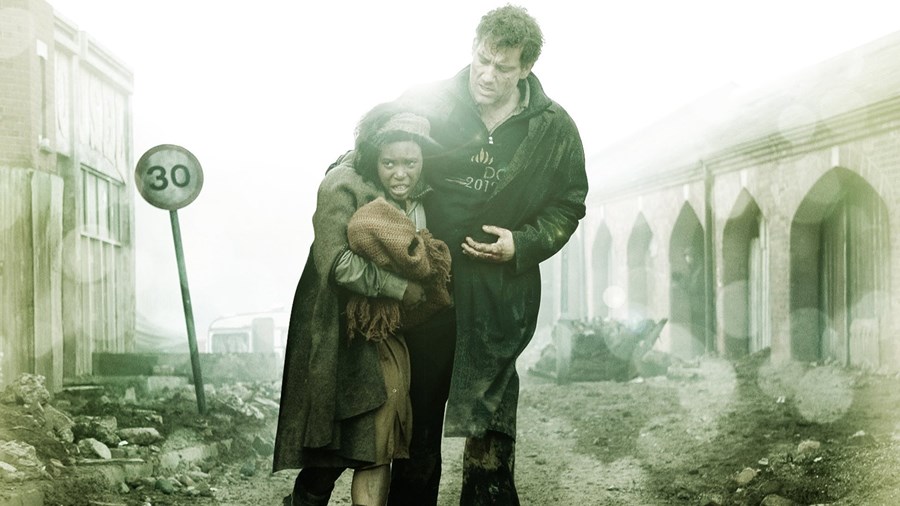
Children of Men (2006)
In the world of Dune, the planet Arrakis used to have oceans, but natural catastrophe left it a desert. However, the visions of Earth offered to us in the video-game adaptation Fallout and the Mad Max franchise point the finger at man for the environment’s widespread obliteration. The former’s desolate landscape has been caused by atomic war, while, for the latter, an oil crisis led to the breakdown of civilisation. Whatever the disaster, our screens have repeatedly been awash with valleys of orange sand: the recurring backdrop to these projections of the future.
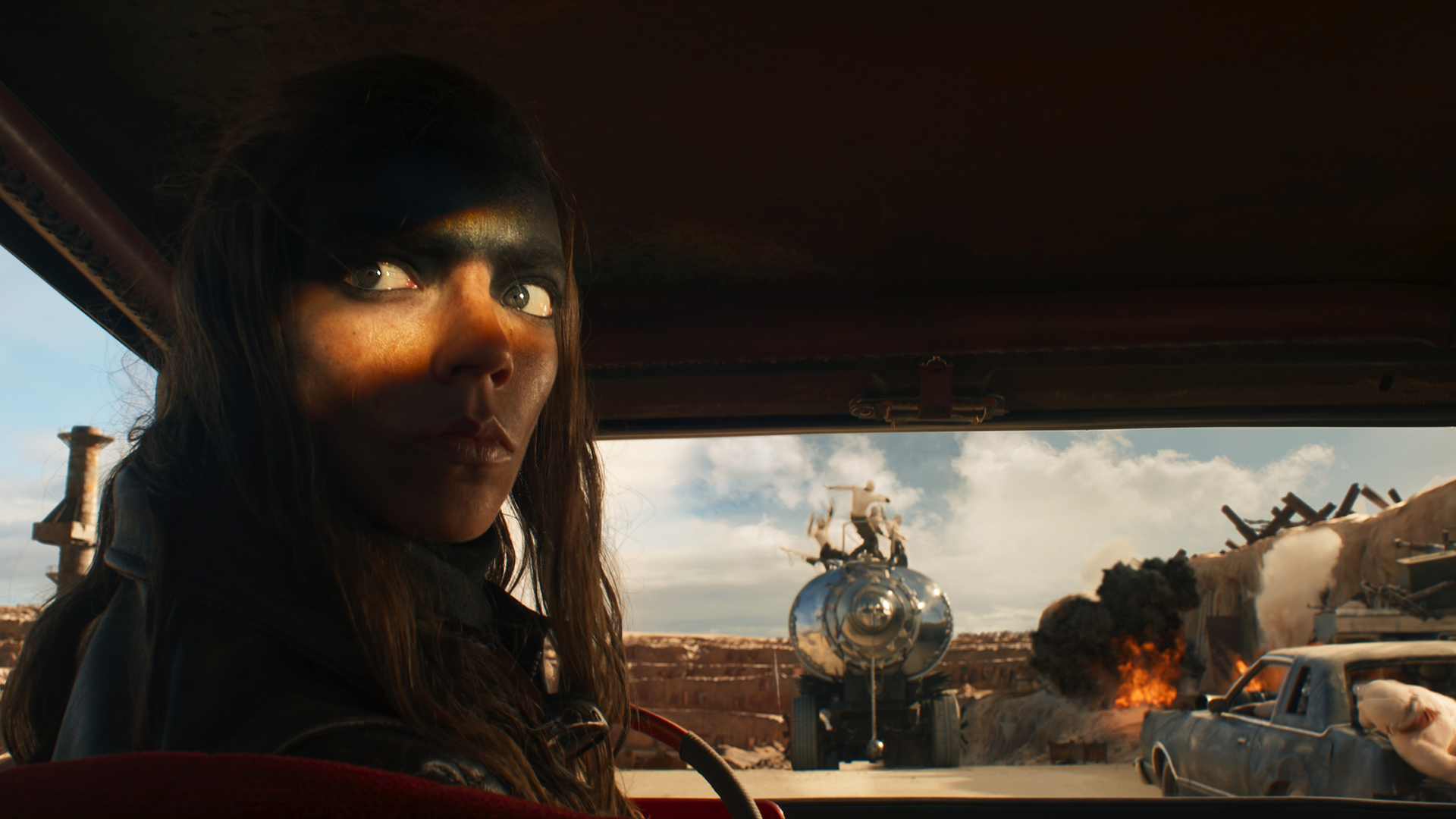
The latest to fill the cinema with oblivion and rage is none other than Furiosa: A Mad Max Saga, the prequel to Mad Max: Fury Road (2015), which returns audiences to the kakistocracy of the Australian Outback. It follows the titular young Furiosa (Anya Taylor-Joy), who has been snatched from her green homeland and now seeks revenge on those who forced her to live in a barren world – namely Dr Dementus (Chris Hemsworth) and his biker gang. For Miller, the future is filled with violence. The remaining survivors of the sun-baked Earth give equal value to oil and water, and those who control the flow of both control the people.
In Dune: Part Two, as in life, commerce and power are inextricably linked, and battles wage over the valuable spice that can be harvested from the desert. To the Fremen – who navigate the vast deserts facing harsh conditions others cannot survive – water is such a sparse resource that it has become sacred. When Lady Jessica (Rebecca Ferguson) sheds a tear, Stilgar (Javier Bardem) reproves her: ‘Never give your water away, not even for the dead.’ Those who don’t believe in the prophecies of the fundamentalists also wonder at the idea of a green planet. Chani (Zendaya) cannot imagine the world Paul (Timothée Chalamet) has come from. He describes it to her as a place where sea and sand meet, and sometimes ‘it rains for weeks’.
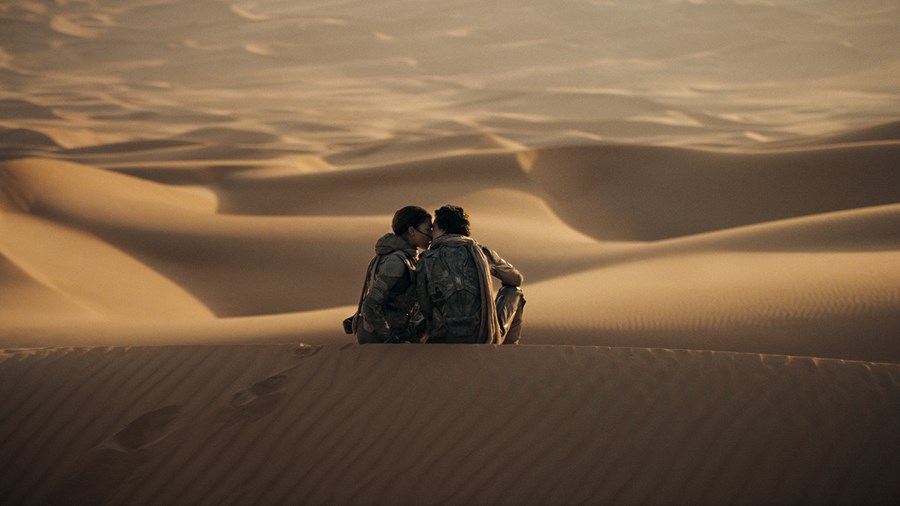
Dune: Part Two (2024)
When the child Furiosa (Alyla Browne) weeps for her dying mother, her kidnapper Dementus is in awe of her tears. He holds her face, prodding at the liquid that pours from her eyes, asking his Wordburger (George Shevstov) – a historian tasked with preservation of knowledge – what the wet substance is. Dementus is not the only one bewitched by water. The Guardian of Gastown (Peter Stephens) spends his days painting John Waterhouse’s Hylas and the Nymphs (1896) as a mural. The fresh water the naked women dwell in is just as desired as the soft-skinned beauties who are rarely found on this scorched earth.

Fallout (2024-)
For the world of Fallout, water is not just sparse, it is radioactive. As Lucy (Ella Purnell) traverses its abandoned California, she thirsts over a puddle. It’s far from a refreshing mirage, and her geiger counter clicks furiously in reaction to its toxicity. ‘Water, water everywhere but not a drop to drink,’ riffs Cooper the Ghoul (Walton Goggins), whose nuclear weather-beaten face is just as devastated by destruction as the world around them. Humanity’s insistence on industry has ravaged the Earth and its inhabitants, and Cooper – the actor-turned-wasteland cowboy – is not the only one to be changed by it. Every desert dweller is physically altered by the landscape, whether that’s the blue tint of the Fremen’s eyes in Dune or the blistered skin of the inhabitants of Mad Max.
Each arid planet has its own form of Messiah, who carries a message or a key to saving the population from desiccation, but with every prophecy comes a warning. In Dune: Part Two, Paul’s ability to drink the Water of Life – a poison believed to be fatal to men – signals to the people that he is the one who will bring them to a green utopia. But the Water of Life is a double misnomer, as the poison reveals his path, which allows him to lead many to their deaths and wage the Holy War. Paul is not the only one who has been led astray by his parent’s guiding hand. Fallout’s vault dweller Lucy believes in the good of her father, and has come to the surface in order to save him. But she too soon realises that the waters of corruption run deep, and her father is not a hero of the nuclear winter, but a middle man who spurred on nuclear war for private profit.

Dune: Part Two (2024)
These may be new worlds built on the ashes of the old, but they share in the mythologising and prophetic tricks that have been used by many to hold power. The promise of a chosen one keeps the people of Dune waiting for their leader, and the world of Mad Max has shattered hope and encouraged humanity to sacrifice itself for oil. The wealthy few of Fallout share in the sentiment of Miller’s warlords, claiming that resources are sparse, while hiding the green bounty and clean water for themselves. These aren’t problems for tomorrow’s world, they mirror our own.
Through the dry rolling landscapes and chapped-lipped heroes, these desert worlds ask who we will choose to become in order to survive. There is a pessimism entrenched in science-fiction, and the sands we see before us. Dune: Part Two, Fallout and Furiosa address the hierarchies humanity inevitably repeats, refusing to learn from the destruction these power imbalances cause.
WATCH FURIOSA: A MAD MAX SAGA IN CINEMAS


